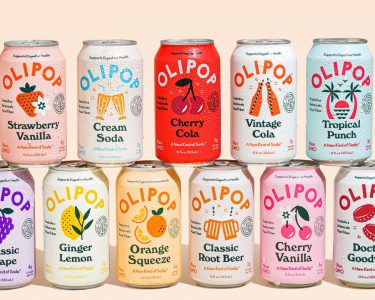Are you a coffee lover who can’t start the day without a fresh cup of joe? Many of us rely on single-serve coffee pods for convenience and efficiency, but have you ever considered the impact these little capsules have on the environment? The amount of waste produced by coffee pods is staggering. However, this doesn’t mean that we should give up our beloved morning ritual! In fact, there are ways to reduce, reuse and recycle coffee pods to make a positive impact on the environment. So grab your favorite mug and let’s explore how you can enjoy your daily caffeine fix while also doing your part for Mother Earth.
What are Coffee Pods?
Coffee pods are single-serving capsules filled with pre-ground coffee and sealed with a filter. They were first introduced in the late 90s, and since then have become an extremely popular choice for coffee lovers all over the world.
These little pods come in various shapes and sizes to fit different types of machines, but they all work on the same principle – hot water is forced through the pod under pressure, extracting flavor from the ground coffee inside.
Most coffee pods are made from plastic or aluminum materials which can take hundreds of years to decompose. This means that they pose a significant risk to our environment by adding more waste to landfills.
Despite this negative impact on the planet, there are some advantages to using coffee pods. For one thing, they offer convenience – you can make a cup of fresh coffee quickly without having to grind beans or measure out grounds. Plus, many people find them more affordable than buying expensive specialty coffees at cafes every day.
While there are pros and cons to using coffee pods when it comes down to it’s up to each individual consumer whether or not they want their morning caffeine fix delivered via pod!
The Negative Impact of Coffee Pods on the Environment
Coffee pods have become increasingly popular in recent years due to their convenience and ease of use. However, they come with a negative impact on the environment that cannot be ignored.
The main issue is that most coffee pods are made from plastic or aluminum, materials which take hundreds of years to decompose. This means that the majority of these pods end up in landfills where they will continue to pollute the environment long after their useful life has ended.
Another problem with coffee pods is that they can only be used once. This creates a significant amount of waste as users discard them after each use. Additionally, many coffee pod manufacturers do not provide clear instructions on how to dispose of them properly, leading to confusion among consumers.
Moreover, producing these single-use coffee pods requires an enormous amount of resources such as water and energy. The manufacturing process also involves emissions which contribute significantly to air pollution and global warming.
In summary, while convenient for our busy lifestyles, coffee pods present significant environmental problems due to their non-biodegradable nature and wastefulness. It’s crucial for us as consumers and manufacturers alike to find ways towards sustainable solutions if we want a cleaner planet for future generations.
The Positive Impact of Coffee Pods on the Environment
Coffee pods have received a lot of criticism for their negative impact on the environment. However, it is important to recognize that there are also positive aspects to using coffee pods. Firstly, coffee pods help reduce food waste as they provide pre-measured portions of coffee grounds which reduces the chance of over-brewing and wasting excess coffee.
Furthermore, most modern-day coffee pod manufacturers prioritize sustainability by using eco-friendly materials such as biodegradable or compostable materials in their production process. These materials ensure that used pods can decompose naturally without harming the environment.
Additionally, with the popularity of single-serve machines increasing each year, many people who would otherwise visit cafes or make larger pots at home end up making just enough for themselves with a single-serve machine. This means less leftover or wasted brewed coffee going down the drain which positively contributes towards lowering water waste.
Some companies take it upon themselves to recycle used pods through programs offered by certain municipalities and recycling facilities; this ensures that no plastic ends up polluting landfills unnecessarily.
While there are certainly valid concerns regarding environmental impacts associated with consumption habits involving single-use items like these; we should not overlook how they contribute positively when comparing them against alternative options available today – especially if one takes necessary steps towards responsibly disposing/recycling them after use!
Recycling Coffee Pods
Recycling coffee pods is one way to reduce the negative impact of these convenient little capsules on the environment. While not all coffee pods are recyclable, many manufacturers have taken steps to make their products more eco-friendly.
To recycle a coffee pod, you first need to check if it can be recycled in your area. Some recycling facilities may accept certain types of pods, while others do not. If your local facility does accept them, simply empty out the used grounds and dispose of them properly before placing the pod in your recycling bin.
If your area does not offer recycling options for coffee pods or if you prefer a more sustainable approach, there are reusable coffee pod options available. These refillable capsules allow you to fill them with your own ground coffee and use them multiple times before disposing of them properly.
It’s important to note that even when using reusable pods or properly recycling single-use ones, reducing overall consumption is still key in minimizing environmental impact. Consider investing in a traditional drip-coffee maker or French press as an alternative option for daily brewing needs.
Conclusion
Coffee pods have been a topic of debate when it comes to their environmental impact. While they do contribute to waste and pollution, there are also positive ways in which they can benefit the environment.
By using coffee pods that are made from recyclable materials and properly disposing of them through recycling programs, we can reduce the amount of waste that ends up in landfills. Additionally, using single-serve coffee makers instead of traditional brewing methods can lead to less water usage and energy consumption.
It’s important for consumers to be aware of the impact their daily choices have on the environment and take steps towards making more sustainable choices. By choosing environmentally-friendly options such as reusable coffee capsules or compostable pods, we can continue enjoying our beloved cup of joe while also reducing our carbon footprint.
So next time you reach for your morning brew, remember that small changes in our habits can have a big positive impact on the world around us. Reduce, reuse and recaffeinate responsibly!




